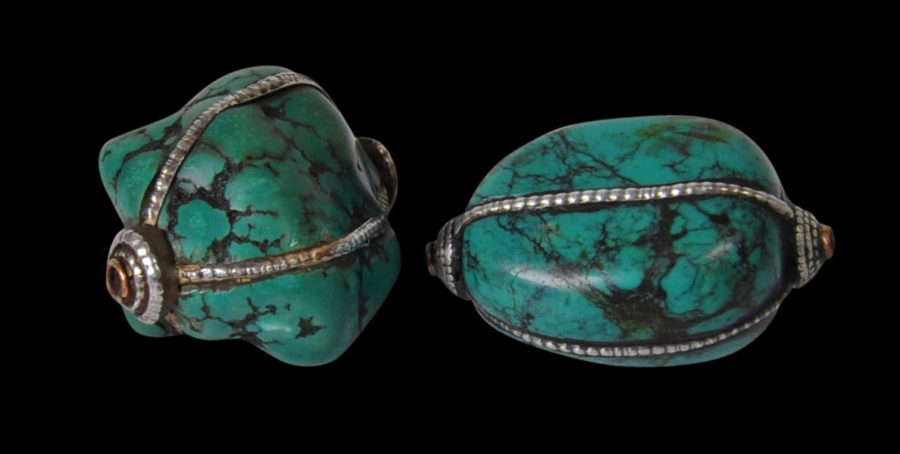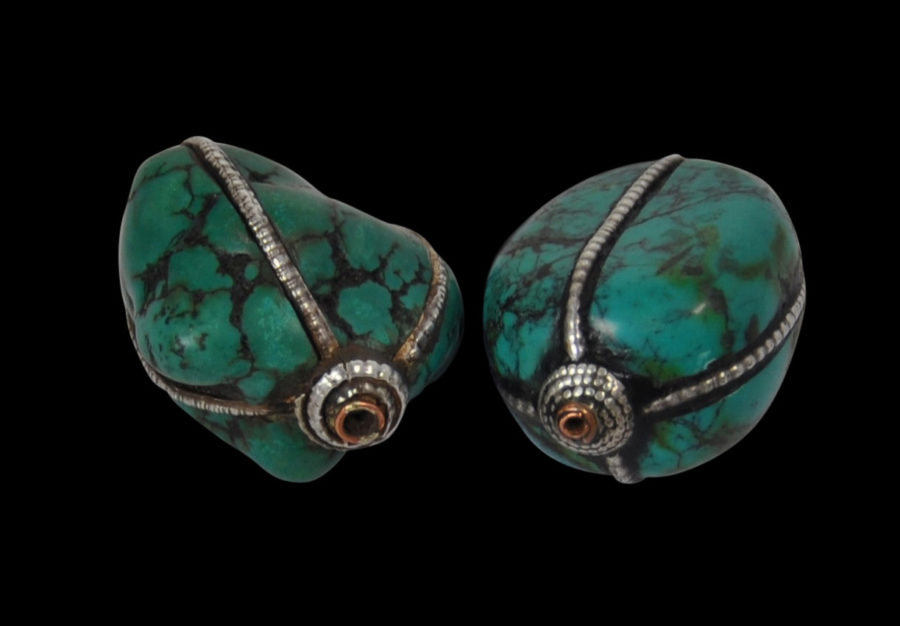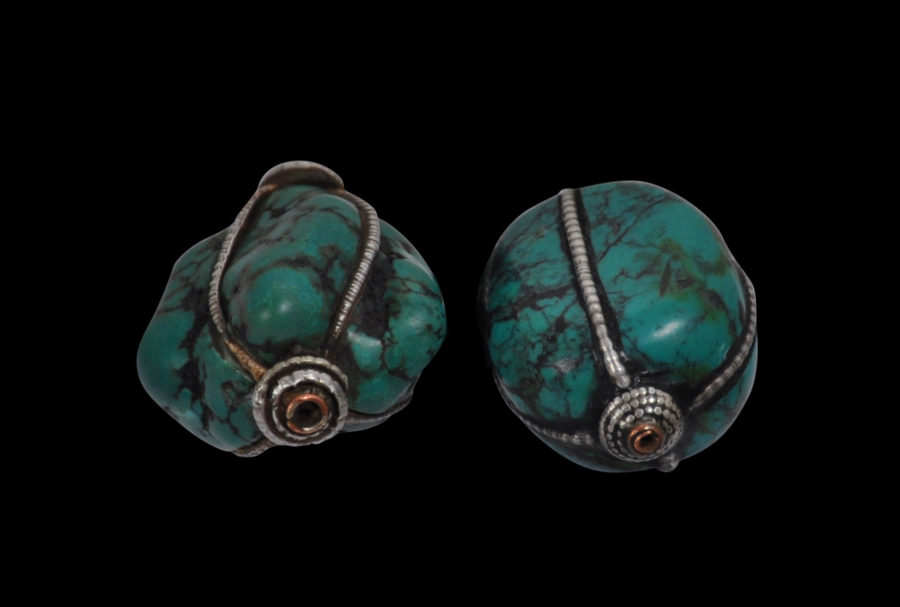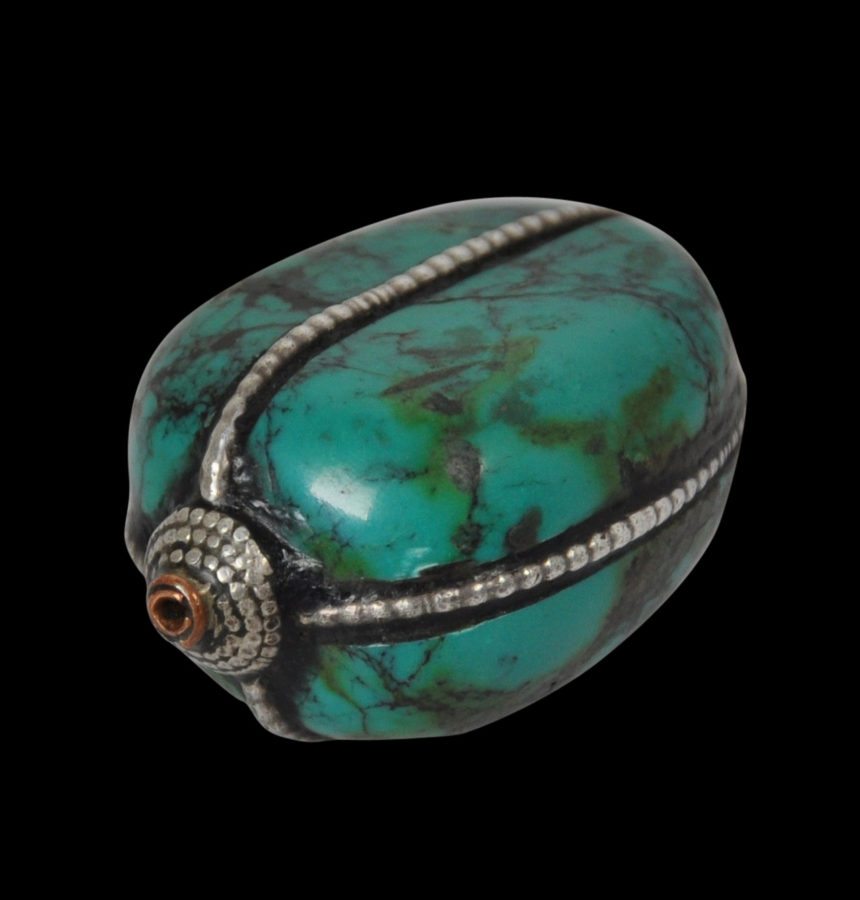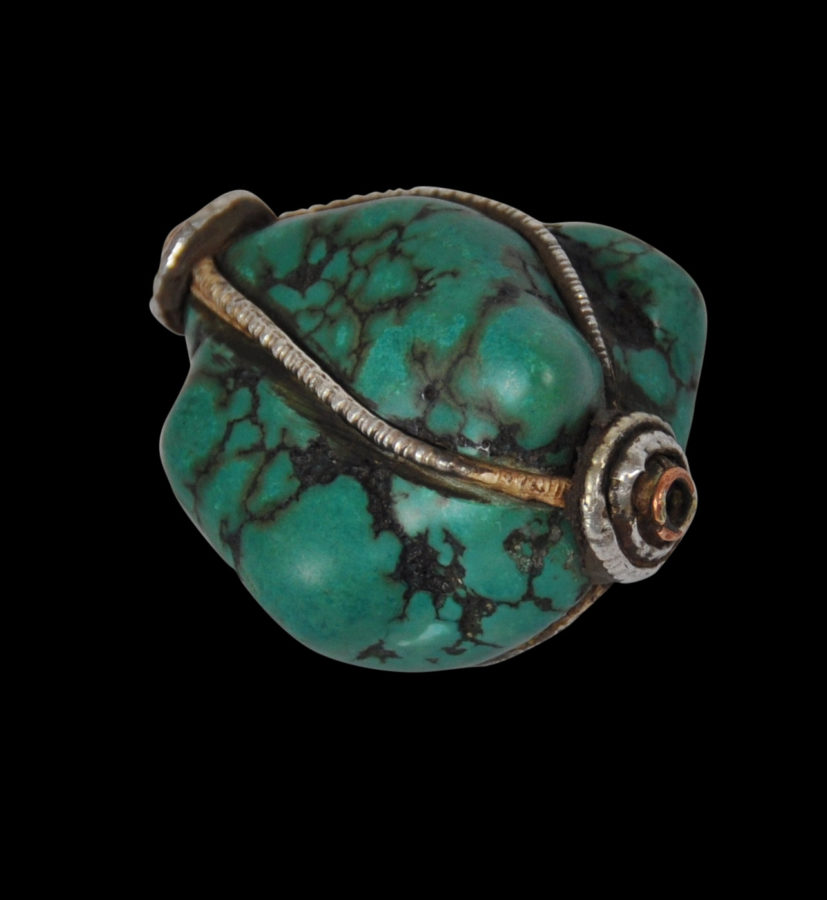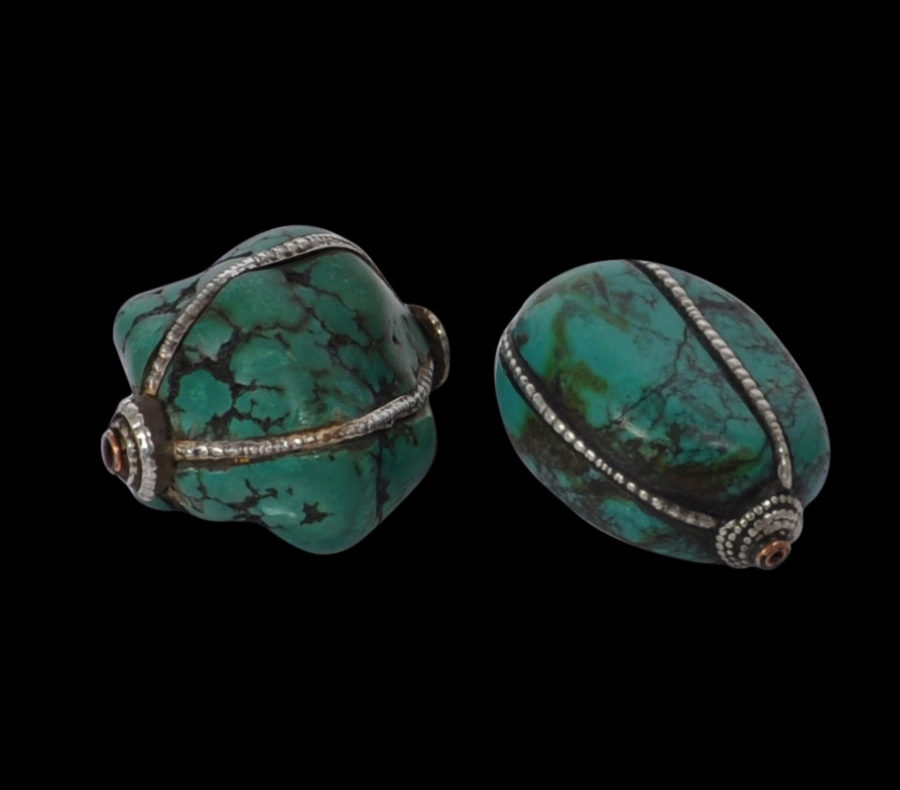These two large turquoise cabochons have been pieced and mounted in silver, thereby converting them into large beads. They might have been worn as pendants or perhaps were attached to clothing, most particularly headdresses. The openings for the holes in the stones are lined with copper and these show considerable wear.
Turquoise, among many Himalayan peoples, is associated with the sky and air.
Geoffrey-Schneiter (2012, p. 43) illustrates a single large turquoise that is almost 5cm long is pierced and would have been worn as a pendant possibly in China and which is attributed to the Qing Dynasty (1644-1911). Geoffroy-Schneiter (2011, p. 148) illustrates another example attributed to Tibet. Neither have silver mounts.
The two here are worn and have wonderful colour.
References
Geoffroy-Schneiter, B., Asian Jewellery: Ethnic Rings, Bracelets, Necklaces, Earrings, Belts, Head Ornaments, Skira, 2011.
Geoffrey-Schneiter, B., Bijoux des Toits du Monde de la Chine au Caucase, Foundation Baur, Musee des Artes D’Extreme-Orient/5 Continents, 2012.


